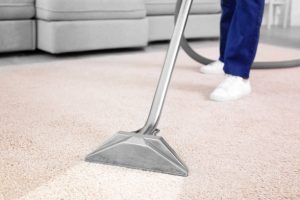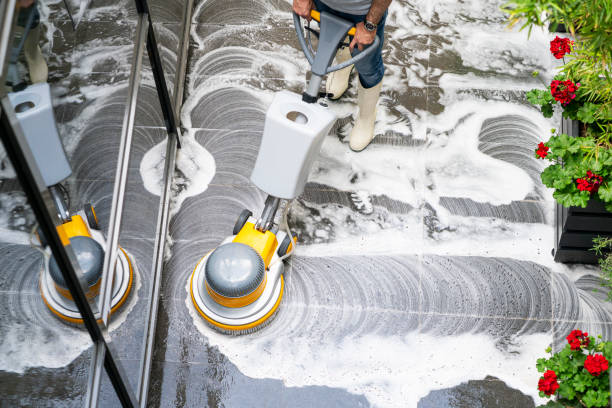Preventing Wear and Tear on Decorative Concrete
So, you’ve got a stunning decorative concrete floor that’s the envy of all your friends and neighbors. Maybe it’s in your home, a commercial space, or your relaxing patio oasis. Whatever the case, it’s crucial to keep your concrete looking fabulous for years to come. One of the key aspects of this upkeep is cleaning commercial floors regularly, but let’s dive deeper into the magic world of maintaining your concrete surfaces without wearing them down to bits and pieces.
First thing’s first, let’s talk about dirt. Ah, dirt—the arch-nemesis of pristine surfaces everywhere. Dust and grime work their way first unnoticed, then all of a sudden—BAM!—your beautiful design looks like a downtrodden piece of old sidewalk. It’s like Cinderella before the ball. Regular sweeping and vacuuming can keep dirt and small abrasives from scratching the surface. Think of it as a gentle back rub for your concrete floor. Embrace a routine and stick to it, rather than letting things pile up.

Next on the to-do list: sealants. These miraculous liquids, if I may be so dramatic, are your best friends for fighting wear and tear. Picture it as a force field; the right sealant not only enhances the look of your decorative concrete but also provides a layer of protection from water, stains, and everyday foot traffic. It’s like gifting your floor a fine designer suit that can survive an apocalypse. It’s a small task with giant rewards.
Spills are inevitabilities in life, much like taxes and bad hair days. When something spills on your beautiful concrete, treat it like a mini-emergency. The longer you wait to clean up a spill, the greater the chance it stains. Whether it’s wine, coffee, or Aunt Marge’s questionable casserole, tackling it immediately makes all the difference. Trust me, a blot today saves you a blotch tomorrow.
Let’s chat footwear for a moment. High heels and cleats have no love for your concrete surfaces. They are the equivalent of bulls in a china shop—beautifully destructive. Encourage a no-shoe policy indoors, or at least offer some cozy slippers for your guests. While it may feel a bit odd at first, it’s a small price to pay for longevity.
Now, for those who have outdoor decorative concrete, nature can be a fickle friend. One trick up your sleeve is to use a breathable cover during the harsh winter months. It’s akin to tucking your concrete in with a warm, cozy blanket. Also, while de-icing pellets are great for sidewalks, opt for less abrasive options on your decorative surfaces to avoid chemical damage.
Speaking of chemicals, be cautious about what you use for cleaning. Harsh cleaners can strip away that lovely finish and even damage the concrete itself. Mild soap and water usually do wonders. Once upon a time, I used an industrial cleaner on my decorative concrete patio. Spoiler alert—it did not end well. Now, I stick to gentle cleaners and live happily ever after.
Another pro tip: use mats and rugs in high-traffic areas. They offer an extra layer of protection and are the unsung heroes of decorative concrete maintenance. Put them by doors, in hallways, wherever people tend to trek the most. It’s like adding a little armor to your floor.
A little winter humor to round things off: it’s always fun to blame something on the weather. If your concrete experiences any severe damage come spring, just point your finger up at the sky and sigh loudly. It’s strangely therapeutic and at the very least, gives a good chuckle.
To keep that decorative concrete looking like it just stepped off the runway, the key lies in regular care without overdoing it. Simple, consistent habits extend its lifespan and keep it shining, much like a classic car in perfect working order. Who knew concrete could be so needy yet oh-so-satisfying?
So, next time you’re thinking of sprucing things up, remember these steps, and give your beautiful floors the love they deserve. Your visitors will be wowed, and your floor will definitely thank you. Cheers to many years of lovely, wear-free decorative concrete!
Revitalize Your Stamped Concrete Floors: A Color Restoration Guide
1. Assess the Damage
First, take a good, hard look at the situation. Has the color faded uniformly, or are there specific areas that look worse for wear? It’s like checking your car for dents after parking too close to the shopping cart return. You need to know what you’re dealing with before you grab a solution.
2. Clean and Prep Like a Pro
Before you roll up your sleeves and bust out the color restorers, you’ve got to get down and dirty with some hardcore cleaning. Sweep away the dirt, debris, and any loose particles. Think of it as giving your floors a well-deserved spa day.
3. Pick the Right Stain or Dye
Next up, it’s time to choose your weapon. It’s like painting a masterpiece—only this canvas is your floor!
– Concrete Stains: These penetrate the surface and give a more natural, variegated look.
– Concrete Dyes: They sit on top of the surface, which makes the colors pop a lot more.
4. Apply the Color
Now for the fun part—adding color. Apply the stain or dye using a sprayer or a brush. Move quickly and don’t let it pool up. Your goal is to get even coverage without any streaks or blobs. It’s kinda like painting a wall, but one that everyone’s walking on.
– Pro Tip: Work in small sections to keep things manageable.
5. Seal the Deal—Literally
Once the color is back, you need to lock it in with a good sealer. This will keep your new, vibrant colors from fading back into oblivion. There are a few options here, from glossy finishes to matte ones. Choose one that suits your style.
– Anecdote: I once skipped this step, thinking I was a DIY hero. My floors lost their charm within months. Trust me, sealers matter.
6. Maintenance Mode
Alright, the hard part is done. Now you just have to maintain that revived look. Sweep regularly and mop with pH-neutral cleaners. Avoid heavy-duty chemicals; they’re your floor’s kryptonite.
Tips and Tricks from the Trenches
– Vacuum First: Vacuum before sweeping to catch those tiny particles that brooms often miss.
– Use Rugs: Strategically place rugs or mats in high-traffic areas. It’s like giving your floors a little extra padding.
– Be Water-Wise: Excess water can eat away at sealer and color. Damp mop, don’t soak.
A Quick Fix for Touch-Ups
Say you notice a little fading or a scuff mark here and there, don’t lose hope. Spot treatments can be your best bud. A small amount of stain applied with a cloth can work wonders in a pinch.
Now, if during this whole process you feel like all you’ve done is added to the mess, don’t be shy about calling in the pros. Sometimes, it’s just worth it to have someone who’s done this a thousand times.






